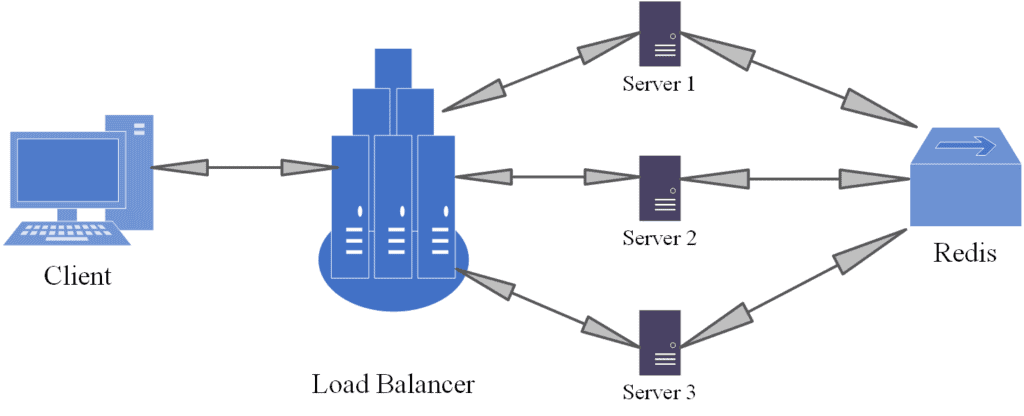1. 概述
在工程实践中,容量规划是每个技术团队都必须面对的问题:我们该如何应对预期或突发的流量高峰?当业务增长时,我们应该选择纵向扩展还是横向扩展我们的应用或网站?
本文将带你理清这两个概念的本质。我们会先解释什么是可扩展性(Scalability),然后对比纵向扩展和横向扩展的区别,最后通过一个 Web 应用的示例来加深理解。
2. 什么是可扩展性?
理解可扩展性是讨论纵向与横向扩展的前提。简单来说,可扩展性是指一个系统在不降低性能的前提下,处理越来越多用户请求的能力。 当系统资源达到瓶颈时,就无法继续响应新请求了。此时,运维人员可以通过增加 CPU、内存、存储等资源来提升系统容量。
以数据库为例,数据库的可扩展性是指它在数据量变化时仍能保持稳定性能的能力。 一旦资源达到上限,就必须通过扩容来继续支撑业务增长。
3. 纵向扩展与横向扩展
3.1 横向扩展(Horizontal Scaling)
横向扩展,也叫“向外扩展”,指的是通过增加服务器数量来提升系统整体处理能力。例如,当单台服务器无法支撑流量时,我们可以加入更多服务器,并通过负载均衡器(Load Balancer)将请求分发到不同服务器上,从而提高系统吞吐量。
✅ 优势:
- 容易扩展
- 支持无上限扩容
❌ 劣势:
- 多节点调试复杂
- 数据一致性管理难度大
3.2 纵向扩展(Vertical Scaling)
纵向扩展,也叫“向上扩展”,是指通过增强单台服务器的资源配置(如增加 CPU、内存、存储)来提升性能。这种方式不会增加服务器数量,而是提升单台机器的处理能力。
✅ 优势:
- 实现简单
- 成本相对较低
❌ 劣势:
- 存在硬件性能上限
- 一旦服务器宕机,整个系统崩溃
3.3 主要区别对比
| 特性 | 纵向扩展 | 横向扩展 |
|---|---|---|
| 数据执行 | 单节点运行 | 多节点并行 |
| 数据管理 | 易于管理(共享地址空间) | 复杂(无共享地址空间) |
| 宕机影响 | 有宕机风险 | 无宕机风险(冗余设计) |
| 扩展上限 | 受限于硬件规格 | 无上限 |
| 成本 | 授权费用低 | 授权费用高 |
4. 优缺点对比
4.1 横向扩展的优缺点
✅ 优点:
- 扩展灵活,支持无限扩容
- 升级只需添加节点
- 成本较低,实现简单
❌ 缺点:
- 数据中心功耗、空间、冷却成本上升
- 调试复杂,维护难度大
- 授权费用高
4.2 纵向扩展的优缺点
✅ 优点:
- 实现简单,易于维护
- 数据中心成本低
- 资源利用率高
❌ 缺点:
- 存在性能上限
- 高端服务器价格昂贵
- 迁移困难,依赖单一厂商
5. 示例:Web 应用
我们以一个简单的 Web 应用为例,来说明两种扩展方式的实现方式。
5.1 纵向扩展
在现有架构不变的前提下,我们可以通过增加 Web 服务器的 CPU、内存等配置来提升性能。但这种方式存在瓶颈:当请求量非常大时,即使配置再高,也难以支撑。
⚠️ 踩坑提醒:这种方案存在单点故障(Single Point of Failure)风险。一旦服务器宕机,整个服务将不可用。
5.2 横向扩展
我们可以通过增加服务器数量来应对高并发请求。此时,负载均衡器会根据算法(如轮询 Round Robin)将请求分发到不同服务器上。
⚠️ 同样踩坑:如果负载均衡器只有一个,它本身也成了单点故障。解决方法是部署多个负载均衡器,一个主用,其余备用。
5.3 会话存储问题
在横向扩展中,用户可能被分发到不同的服务器上。例如:
- 用户首次请求被分发到 Server 1,Session 信息保存在 Server 1;
- 第二次请求被分发到 Server 2,由于没有 Session,用户需要重新登录。
✅ 解决方案:将 Session 信息从服务器中剥离出来,统一存储在共享的缓存系统中,如 Redis。
如下图所示,所有服务器都将 Session 信息写入 Redis,这样无论用户被分发到哪台服务器,都能获取到 Session:

⚠️ 注意:Redis 本身也可能成为单点故障。建议为 Redis 配置主从架构或集群,提高可用性。
6. 总结
通过本文,我们了解了可扩展性的基本概念,并详细对比了纵向扩展和横向扩展的优缺点。最后,我们通过一个 Web 应用的示例,展示了两种扩展方式的实际应用场景。
✅ 结论:
- 纵向扩展适合小规模、对性能要求不高的场景;
- 横向扩展更适合大规模、高并发、对可用性要求高的系统;
- 实际项目中,两者可以结合使用,取长补短。
最终选择哪种扩展方式,取决于你的业务规模、预算、技术栈以及对系统可用性和扩展性的要求。